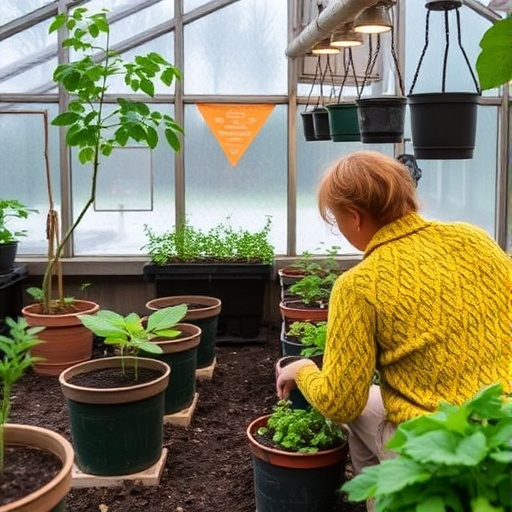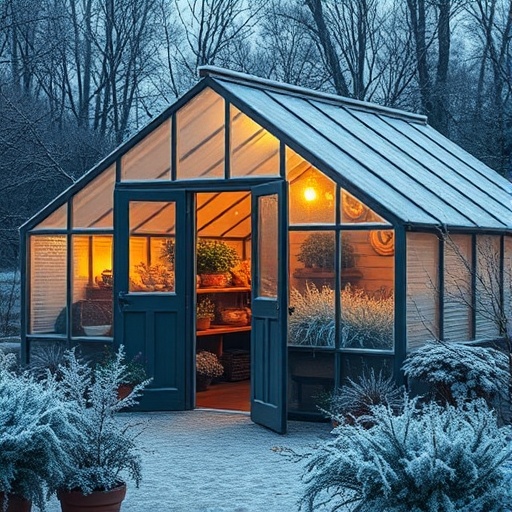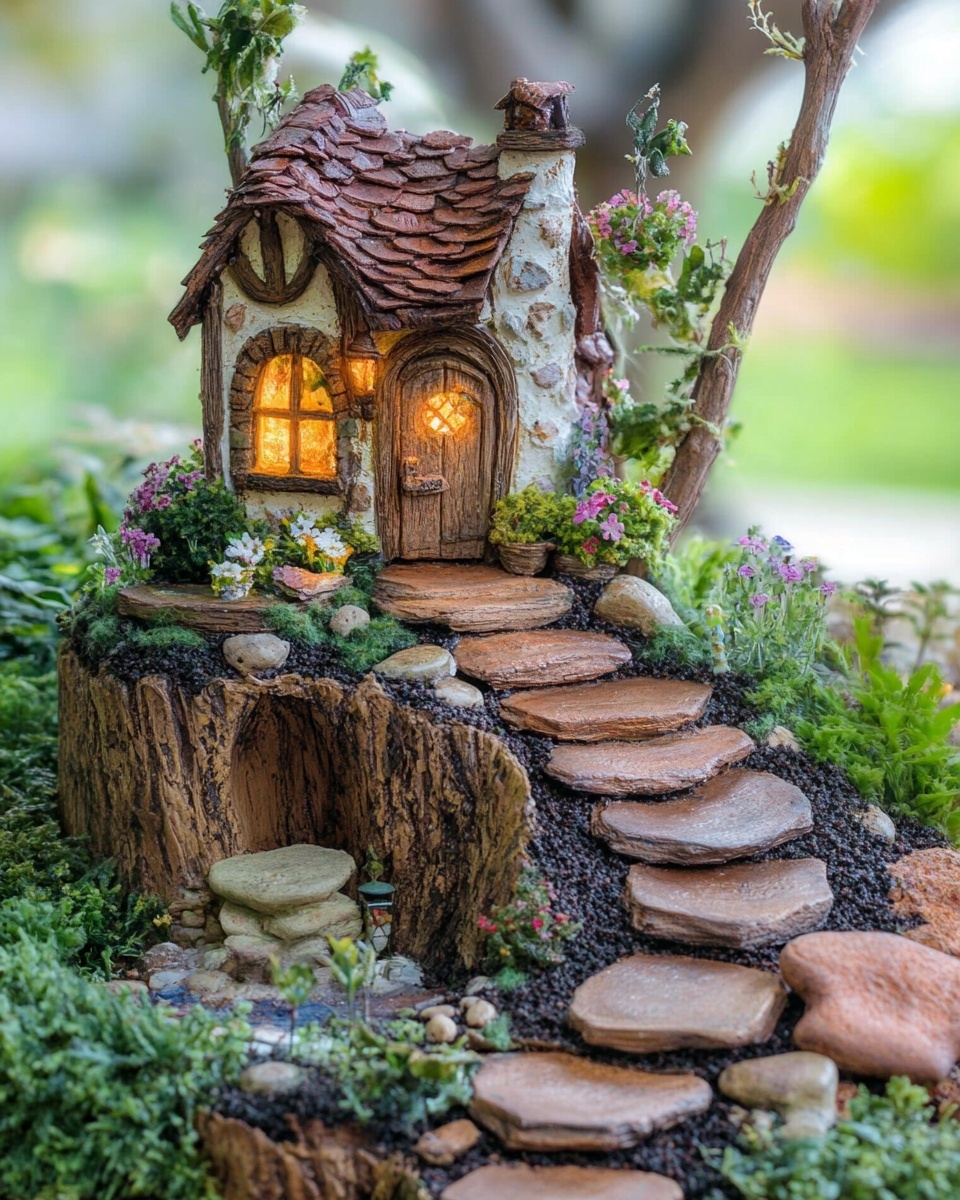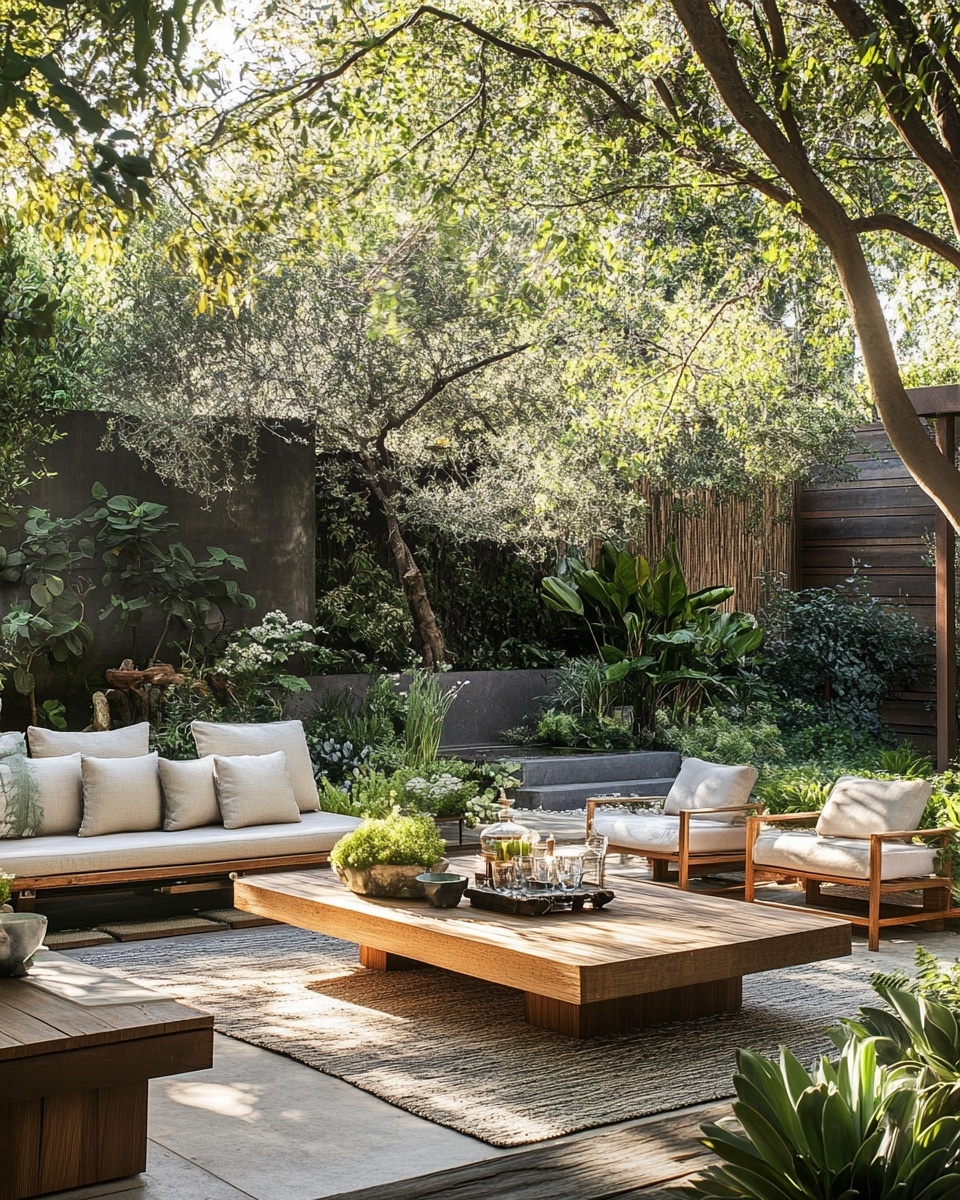Introduction
Did you know that extending your growing season indefinitely, even through the harshest blizzards, is not just a dream but a tangible reality for countless home gardeners? In fact, studies show that properly managed greenhouses can increase yield by up to 50% during off-seasons. Imagine harvests bustling with fresh greens, vibrant herbs, and even ripe tomatoes when your outdoor garden lies dormant under a blanket of snow. This detailed guide will unlock the secrets to successful winter gardening, transforming your greenhouse into a thriving sanctuary, even as temperatures plummet outside. We'll explore practical strategies, data-backed tips, and expert insights to ensure your plants not only survive but flourish, making winter gardening an enjoyable and fruitful endeavor.
Tools & Materials Needed
Embarking on a winter gardening adventure requires a thoughtful selection of tools and materials to ensure your plants stay snug and productive. Think of your greenhouse as a miniature ecosystem, and these items as the building blocks for its success.
- Greenhouse Structure: The core of your winter haven. Whether it's a small cold frame, a hoop house, or a full-sized glass or polycarbonate greenhouse, ensure it's structurally sound and well-sealed. For budget-friendly alternatives, clear plastic sheeting draped over a sturdy frame can create a temporary yet effective mini-greenhouse.
- Heating System: This is paramount for consistent warmth. Options range from electric heaters (with thermostats for precise control), propane/natural gas heaters, or even passive solar heating systems. For an eco-friendly approach, consider a composting heat pile or thermal mass elements like dark-colored water barrels.
- Insulation: Crucial for retaining heat. Bubble wrap insulation (UV-treated for longevity), thermal blankets, or even moving blankets can be used on walls and roofs, especially at night. Polystyrene boards are excellent for insulating foundations.
- Thermometer/Hygrometer: Essential for monitoring temperature and humidity. Aim for a digital one with minimum/maximum readings to track fluctuations.
- Circulation Fan: Prevents stagnant air, reduces fungal diseases, and helps distribute heat evenly. A small oscillating fan is usually sufficient.
- Grow Lights (Optional but Recommended): Even in a greenhouse, winter days are shorter and light intensity is lower. Full-spectrum LED grow lights can significantly boost plant growth. Opt for energy-efficient models.
- Pots and Containers: Choose materials that retain heat well, like terracotta or dark-colored plastic. Fabric grow bags are also excellent for aeration and preventing rootbound plants.
- Quality Potting Mix: A sterile, well-draining mix is vital. Look for mixes high in organic matter to provide nutrients. For a budget-friendly option, consider blending your own with compost, peat moss (or coco coir as a sustainable alternative), and perlite.
- Seeds/Starts: Select cold-hardy varieties or those suitable for cooler temperatures. Think leafy greens, root vegetables, and certain herbs.
- Watering Can or Hose with a Gentle Nozzle: For precise, controlled watering.
- Pruning Shears: Keep them sharp and clean for healthy plant maintenance.
Time & Effort Overview
Winter gardening, while incredibly rewarding, does require a certain level of commitment. The initial setup time can vary widely: a small cold frame might take a few hours, whereas erecting a medium-sized greenhouse could be a weekend project or even require professional help.
Once established, daily maintenance for your winter garden typically involves 15-30 minutes of checking temperatures, humidity, and plant health, plus watering as needed. Weekly tasks, such as fertilizing, pruning, and pest scouting, might add an hour or two. Compared to outdoor summer gardening, which often demands heavy weeding and intensive pest management, winter gardening sometimes feels less physically strenuous but requires more vigilance regarding environmental controls. For instance, plants grown in a controlled greenhouse environment can mature up to 25% faster than their outdoor counterparts due to optimized conditions.
The difficulty level for greenhouse winter gardening starts at intermediate for those new to greenhouses, mainly due to the learning curve of managing climate controls. However, with this guide's insights, beginners can quickly gain confidence and transform into proficient winter growers.
Step-by-Step Gardening Process
Here's how to keep your plants warm and thriving for successful winter gardening:

Preparing Your Greenhouse for Winter
Start early. Clean your greenhouse thoroughly, inside and out. Repair any broken panes or tears in plastic. Seal all cracks and gaps with caulk or weatherstripping to prevent heat loss. This step alone can reduce heating costs by 15-20%.
Optimizing Insulation and Heating
Add an extra layer of insulation. Bubble wrap on the inside roof and walls works wonders. Drape thermal blankets over plants on exceptionally cold nights. Install your chosen heating system and set the thermostat. Aim to maintain night temperatures above 45°F (7°C) for most cool-season crops.
Selecting the Right Plants
Choose cold-tolerant varieties. Spinach, lettuce, kale, collards, Swiss chard, carrots, radishes, and herbs like cilantro and parsley are excellent choices. Don’t worry if some common summer plants won't survive; there's a vast array of delicious winter-hardy options.
Preparing the Soil and Planting
Fill your pots or raised beds with a high-quality, well-draining potting mix. Incorporate a slow-release organic fertilizer. Sow seeds or plant starts according to their specific requirements. Ensure adequate spacing for air circulation.
Watering Judiciously
Water in the morning on sunny days. This allows plants to absorb moisture and the soil to dry slightly before nightfall, reducing humidity and fungal issues. Overwatering is a common mistake; 60% of seedling failures are due to excessive moisture. Stick your finger an inch into the soil – if it feels dry, then water.
Providing Supplemental Light (If Needed)
Install grow lights above your plants. Set a timer for 10-14 hours daily to mimic longer daylight hours. Position them 6-12 inches above plant canopies, adjusting as plants grow.
Ensuring Good Air Circulation
Run your circulation fan for a few hours daily, even on cold days, to prevent stagnant air. Open vents or crack the door briefly on warmer, sunny days to introduce fresh air and reduce humidity.
Monitoring and Adjusting
Daily checks are crucial. Monitor temperature, humidity, and plant health. Look for signs of pests or diseases. Adjust heating and ventilation as needed. Here's how to fix minor temperature drops: temporarily add a small electric heater or cover plants with row covers.
Growth & Care Tips
Consistent care is the backbone of a vibrant winter garden.
- Watering Frequency: Reduce watering compared to summer. Plants transpire less in cooler temperatures. Check soil moisture every 2-3 days; water only when the top inch or two feels dry. Watering in the morning is best. Data shows that watering schedules aligned with plant needs can reduce water usage by 30% while improving plant vigor.
- Sunlight Exposure: Maximize natural light by keeping greenhouse coverings clean. Rotate potted plants weekly to ensure all sides receive adequate light. If reliance on grow lights, ensure they provide full-spectrum light, mimicking natural sunlight for optimal photosynthesis.
- Pruning: Remove any yellowing, diseased, or dead leaves promptly. This directs the plant's energy towards healthy growth and improves air circulation, reducing disease risk. For leafy greens, harvest outer leaves to encourage continuous production.
- Fertilization: Use a balanced liquid organic fertilizer every 2-4 weeks, or as per package instructions for your chosen plants. Winter growth is often slower, so avoid over-fertilizing. A balanced NPK ratio (e.g., 5-5-5) is typically sufficient.
- Pest Prevention: Winter greenhouse environments can sometimes become breeding grounds for pests like aphids and spider mites due to enclosed conditions. Inspect plants regularly. Use insecticidal soap or neem oil for early infestations. Introduce beneficial insects like ladybugs as a natural biological control if populations become problematic. Remember, prevention is easier than cure!
Eco-Friendly & Sustainable Alternatives
Cultivating a green thumb in winter can also be incredibly green for the planet.
- Composting: Turn kitchen scraps and garden waste into nutrient-rich compost. This not only diverts waste from landfills but also provides free, high-quality soil amendments. Create a small composting bin within or near your greenhouse.
- Natural Fertilizers: Beyond your own compost, consider using worm castings, seaweed extract, or fish emulsion. These provide essential nutrients without the environmental impact of synthetic fertilizers.
- Water Conservation: Install a rain barrel outside your greenhouse to collect rainwater for irrigation. This reduces reliance on municipal water and often provides plants with “softer” water. Implement drip irrigation systems for targeted watering, reducing evaporation by up to 50% compared to overhead watering.
- Thermal Mass Heating: Bury water barrels painted black in your greenhouse or fill them with water and place them strategically. These absorb solar heat during the day and slowly release it at night, providing passive heating.
- Repurposed Materials: Use old windows for cold frames, pallet wood for raised beds, or recycled plastic bottles cut open as mini cloches for individual seedlings.
- Small Spaces: Even without a large greenhouse, you can enjoy winter harvests. Consider a "cold frame" made from old windows or a mini hoop tunnel. For indoor options, check out our guide on "how to start a balcony herb garden in small spaces" and "vertical indoor garden ideas for small spaces".
Creative Ideas & Uses
A winter greenhouse isn't just for growing food; it's a living space that can inspire and delight!
- Edible Decor: Arrange colorful leafy greens like 'Red Russian' kale or vibrant Swiss chard in decorative pots. They are both beautiful and delicious. Hang small herb baskets from the greenhouse ceiling for both visual appeal and easy access while cooking.
- Repurposed Garden Materials: Old wooden crates can become tiered planters. Vintage watering cans can be planters for small succulents or herbs. Use reclaimed bricks to create visually interesting paths or raised bed borders within your greenhouse.
- Integrated Seating Area: If space allows, add a small bench or a comfortable chair. This transforms your greenhouse into a peaceful retreat, a warm haven to relax in, even on the coldest days. Imagine sipping tea surrounded by lush greenery!
- Vertical Gardening Solutions: Maximise your space with vertical planters or shelves. This is especially good for herbs, strawberries, or smaller leafy greens. For more inspiration, explore "vertical balcony herb garden design ideas".
- Thematic Planting: Design a specific section for "winter herbal teas" with mint, chamomile, and lemon balm, or a "winter salad bar" with different varieties of lettuce and spinach.
Common Mistakes to Avoid
Even experienced gardeners sometimes stumble. Knowing these pitfalls can save you frustration and plants.
- Overwatering: This is by far the most common mistake in winter. Cooler temperatures and lower light reduce plant water needs. Overwatering leads to root rot in 60% of houseplants and greenhouse plants, killing roots by depriving them of oxygen. Always check soil moisture before watering.
- Insufficient Air Circulation: Stagnant, humid air is a breeding ground for fungal diseases like powdery mildew and botrytis. Ensure you have a fan running and ventilate whenever possible, even if briefly.
- Neglecting Pest Checks: Pests love the stable, warm environment of a greenhouse. Ignoring initial signs can lead to overwhelming infestations. A quick daily check can spot issues early.
- Lack of Insulation: Underestimating heat loss through gaps and uninsulated surfaces is a costly error. Heat escapes surprisingly quickly. Investing in proper insulation upfront saves significantly on heating bills and keeps plants healthier.
- Planting Non-Cold-Hardy Varieties: While tempting to grow summer favorites, many simply won't thrive in cooler, lower-light winter conditions, even in a greenhouse. Stick to plants known for their cold tolerance.
- Incorrect Lighting: Assuming natural light alone is enough in winter. Short days and low sun angles mean supplemental lighting is often crucial for vigorous growth, especially for fruiting plants. Without it, plants become leggy and unproductive.
Maintenance & Storage Tips
Long-term success in winter gardening hinges on smart maintenance and preparation.
- Long-Term Plant Health: Regularly inspect your plants for nutrient deficiencies. Yellowing leaves can indicate a lack of nitrogen, while purple hues might signal phosphorus deficiency. Address these with appropriate organic fertilizers. Keep foliage clean by gently wiping dust, enhancing light absorption.
- Greenhouse Cleaning: At the end of the winter season (or during a warmer spell), give your greenhouse a deep clean. Disinfect surfaces to kill off any lingering pathogens. This proactive step helps prevent disease outbreaks in future growing cycles.
- Seed Storage: If you're saving seeds, ensure they are thoroughly dry before storing them in airtight containers in a cool, dark, and dry place. Proper seed storage can maintain viability for years. Label them clearly with the date and variety.
- Seasonal Care: As spring approaches, gradually reduce supplemental heating, allowing plants to acclimate. Increase ventilation as outdoor temperatures rise. Start hardening off any seedlings destined for outdoor planting.
- Tackling Common Issues:
- Yellow Leaves: Often a sign of overwatering, nutrient deficiency, or insufficient light. Assess your watering schedule, apply a balanced fertilizer, or increase light exposure.
- Poor Soil Drainage: If water pools on the surface or soil stays soggy, your potting mix is too dense. Improve drainage by adding perlite, coarse sand, or coco coir to your mixes. Repotting with better-draining soil can save struggling plants.
- Leggy Growth: Indicates insufficient light. Lower your grow lights or increase their duration. Rotate plants to ensure even light exposure.
Conclusion
Embracing winter gardening through the magic of a greenhouse transforms what was once a dormant season into a vibrant, productive spectacle. From the data showcasing increased yields to the simple joy of harvesting fresh produce amidst frost, the benefits are undeniable. By carefully selecting tools, understanding your plants' needs, and diligently applying the practical tips shared, you're not just growing food; you're cultivating a year-round connection with nature and enjoying fresh, healthy produce no matter the weather. Don't let winter dim your gardening spirit!
Ready to get started? Grab your favorite seeds, insulate that greenhouse, and let’s grow some green! Share your winter garden photos with us on social media—we’d love to see what you create. If you're looking for more inspiration, consider visiting https://www.pinterest.com/janatjanay47/ for a visual feast of garden ideas.
FAQ
Q1: What's the ideal temperature range for a winter greenhouse?
A1: For most cool-season crops, maintaining night temperatures between 45-55°F (7-13°C) and daytime temperatures between 60-75°F (15-24°C) is ideal for optimal winter gardening growth. Consistent temperatures are key.
Q2: How often should I water plants in my winter greenhouse?
A2: Water less frequently than in summer. Check the top inch or two of soil; if dry, then water. It's generally best to water in the morning to allow foliage to dry before nightfall, which helps prevent fungal diseases.
Q3: Do I really need grow lights for winter gardening in a greenhouse?
A3: While greenhouses offer more light than indoors, winter days are shorter and light intensity is significantly lower. Supplemental grow lights provide the crucial light spectrum and duration needed for robust plant growth, especially for fruits or fast-growing leafy greens, making winter gardening more productive.
Q4: What are the best cold-hardy vegetables for a winter greenhouse?
A4: Excellent choices for winter gardening include leafy greens like spinach, lettuce, kale, and Swiss chard, along with root vegetables such as carrots, radishes, and some varieties of beets. Many herbs like cilantro and parsley also thrive.
Q5: How can I prevent pests in my enclosed greenhouse during winter?
A5: Regular inspection is your best defense. Check plants daily for early signs of pests. Ensure good air circulation with fans, use insecticidal soap or neem oil for early infestations, and if significant, consider introducing beneficial insects.
Q6: My greenhouse humidity is too high. What should I do?
A6: High humidity can lead to fungal diseases. Increase air circulation with a fan. Ventilate briefly on warmer, sunny days by opening vents or cracking the door. Water in the morning and avoid overwatering.
Q7: Can I grow tomatoes or peppers in a winter greenhouse?
A7: It's challenging but possible with significant effort. These warm-season crops require higher consistent temperatures (above 60°F/15°C even at night) and substantial supplemental light. It requires more heating and energy than growing cool-season crops for successful winter gardening.
More Gardening Inspiration for You:
- Flower Gardening Tips for Every Season: Dive deeper into year-round beauty. From spring blooms to winter wonders, this guide helps you keep your outdoor garden vibrant. Find it here: "flower gardening tips for every season"
- Best Herbs to Grow on a Sunny Balcony: If you’re yearning for fresh herbs but lack space, discover our top picks for a sunny spot. Get growing with this guide: "best herbs to grow on a sunny balcony"
- Easy Flowers to Grow for Beginners: Thinking of adding some color but unsure where to start? This article introduces you to resilient, beautiful flowers perfect for new gardeners. Check it out: "easy flowers to grow for beginners"






